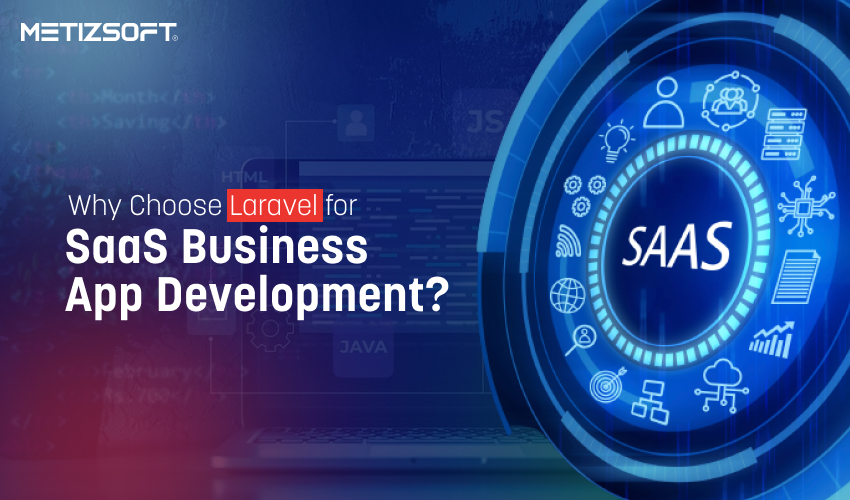
In the past, the Laravel and SaaS combination has done wonders for numerous tech enterprises and entrepreneurs. This combo has resulted in many successful business apps which are still relevant.
However, in the fast-paced digital and SaaS world, choosing the proper framework apart from Laravel still needs to be clarified for innovative minds.
In 2024, with ever-evolving technology, many wonder: is Laravel still a convenient choice for modern SaaS business apps? This remains a big question for many!
This blog explores the Laravel and SaaS combo, exploring its definition and successful examples. It also unveils whether Laravel remains the champion. So buckle up and discover if Laravel is the key to unlocking your successive SaaS triumph!
Table of Contents
What is Laravel?
Laravel is a PHP-based open-source backend framework designed to simplify and expedite web application development. It has built-in components and features that help web developers create a website with PHP. These features make Laravel an excellent choice for business owners worldwide.
Laravel’s adherence to the model-view-controller approach, a widely accepted practice in web application development, ensures efficient development times, streamlined maintenance, and robust scalability. This makes Laravel an ideal option for custom web projects, instilling confidence in its effectiveness.
Understanding SaaS
SaaS, which stands for Software as a Service, delivers software applications online. With SaaS, you don’t need to worry about installing or maintaining the software. You can access it via the internet, which frees you from the complexities of software and hardware management.
SaaS applications are also web-based, on-demand, or hosted software. This software delivery model provides several benefits for your business, including more efficient resource utilization, improved customization, reduced costs, and better connectivity with your stakeholders. The SaaS app achieves these benefits through four customizable SaaS characteristics.
Why is Laravel ideal for Saas and your business?
Understanding the relationship between Laravel and SaaS is crucial for SaaS development. Laravel’s pre-built components, modular architecture, and support for complex backends make it an excellent choice. The Laravel SaaS boilerplate is one of the best options for application development.
Simplified Authentication: Laravel offers an access control system that limits access to various resources, simplifying authentication implementation. This feature is crucial when selecting Laravel for your business app development needs.
Third-Party Incorporation: When creating Laravel SaaS apps, developers must integrate external software like payment gateways, cloud integration, and image processing APIs into Laravel for a user-friendly interface. Proper functioning is crucial for generating user data views. Laravel’s simple and efficient API management system eliminates API development and management complexities, making it ideal for SaaS apps.
Simplified Customization: Laravel simplifies application architecture and is ideal for large dev teams. It includes features like Git for easy customization without maintenance issues. The MVC model offers separate models, controllers, and views for stress-free individual component development.
Blade Template Engine: Laravel provides an efficient access control system that simplifies authentication by managing access to various resources and assets. The Blade Template Engine, which is a crucial component of Laravel’s ecosystem, makes it an excellent choice for developing web applications as a service.
Security Enhancement: Security is a primary concern when developing SaaS-based applications. Laravel is a framework with robust security features, making it a good choice. The Laravel framework provides comprehensive security measures such as secure routing, password hashing, HTTP authentication and AES (Advanced Encryption Standard) encryption.
Supports Modular App Structure: Laravel is a powerful MVC (Model-View-Controller) framework. It enables the creation of modular components that can be integrated into the primary application at any time. It also allows for the easy addition or removal of third-party tools. By choosing Laravel, you can avoid any issues that may arise while managing APIs, making it an excellent choice for developing SaaS applications.
In-built Libraries: Laravel’s extensive library of built-in tools and object-oriented components makes it the top choice for developing enterprise-grade SaaS applications.
Single Window Format: Let’s consider the dashboard to understand the connection between Laravel and SAS products. Dashboards are a crucial part of SaaS product design, as they display all the data from different touchpoints in the application architecture to the users and provide them with all the necessary settings and options to use the SaaS product effectively.
Supports All SaaS Revenue Models: SaaS products generate recurring revenue through subscription-based models, allowing continuous feedback and improvement. Although some SaaS products come with a single flat pricing model, most are subscription-based, enabling the introduction of new ideas to captivate and satisfy users.
Database Migration: The Laravel framework has a database migration feature that allows your development teams to create a new database. It also facilitates quickly updating your existing database to the latest version, smoothing the development process for your business’s SaaS applications.
Boost Performance: Applications with multiple routes and settings benefit significantly from route caching, which improves overall performance by speeding up the route registration process.
Laravel + SaaS Products: Examples!
Now that we have discussed the benefits of choosing Laravel for SaaS development, let’s look at some real-world examples of SaaS applications built with Laravel.
Laravel Spark: Managing subscriptions, invoicing, billing, and teams are all fundamental features of SaaS products. Laravel provides a package that simplifies the process. Additionally, Laravel Spark prioritizes security with features like authentication, two-factor authentication (2FA), password resets, and profile picture management.
Laravel Envoyer: Envoyer is a PHP deployment service that allows you to deploy your projects without downtime continuously. It is an excellent example of a Laravel SaaS application that enables you to connect with hosting servers through GitHub and move file commits seamlessly.
Cloudways: Cloudways is a Laravel-managed hosting platform designed to simplify cloud hosting for all users. It ensures the lightning-fast performance of all PHP-powered applications. The platform also has features such as invoicing, billing, and payment management so its users can manage their applications effectively.
Final Thoughts!
The benefits and examples listed above say everything about Laravel and its robustness in creating SaaS applications for business owners. It’s undoubtedly the most viable framework for creating unified and scalable applications.
In contrast, if you are confused over this Laravel and SaaS combination, I believe this blog answers your doubts. Now, it’s up to you to find and hire Laravel developers from a renowned Laravel development company to see your SaaS-based business app skyrocket in this rapidly multiplying digital landscape!
Contact us today for more assistance and support!
AboutChetan Sheladiya
Related Posts
A Comprehensive Guide to Machine Learning App Development for Web and Mobile
Table of Contents IntroductionWhat is Machine Learning?Step by Step Guide to Develop a Machine Learning AppBenefits of...
5 Key Highlights on Why Python has Emerged As Favorite Programming Language in 2022!
In the dominating era of programming languages like Kotlin, Go lang, and Ruby on Rails, inevitably, the second preferred...

